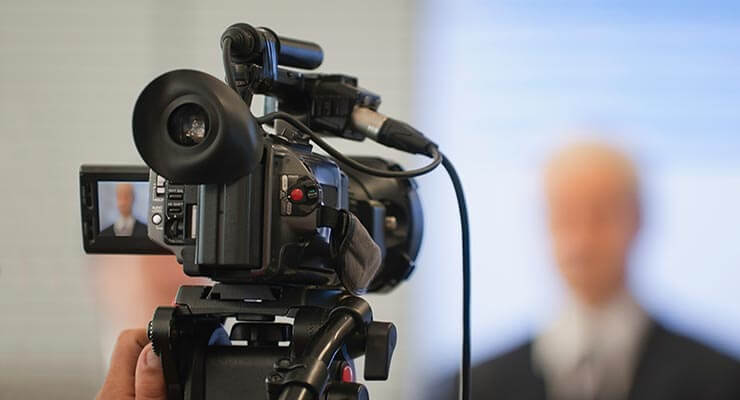Top-Notch Legal Videography for Trials.
Top-Notch Legal Videography for Trials.
Blog Article
Why Lawful Videography Is Essential for Accurate Legal Record-Keeping
In the world of legal process, the accuracy of record-keeping is extremely important, and lawful videography arises as an important device in this context. As we explore the diverse benefits of lawful videography, one should consider its effects for the future of judicial integrity and openness.
Relevance of Visual Evidence
Developing the importance of visual evidence in lawful procedures is critical for making certain accurate record-keeping and improving the general integrity of the judicial process. Aesthetic evidence functions as an important tool in recording events, conditions, and other pertinent details that may be crucial to a situation. Unlike composed accounts, which are at risk to analysis and predisposition, visual recordings provide an objective, unalterable depiction of facts as they took place.


This kind of proof can capture a range of components, including witness actions, ecological context, and physical proof, every one of which may affect judicial results. By offering a clear and extensive aesthetic narrative, legal videography eliminates uncertainty and helps to protect the credibility of the evidence.
Moreover, visual evidence can be important in lowering disagreements over valid disparities, as it permits a direct contrast against statement and various other recorded documents. In an age where digital innovation is significantly prevalent, the capacity to present aesthetic proof efficiently can dramatically enhance the overall top quality of legal proceedings. Ultimately, the incorporation of visual evidence not only boosts the documents process yet additionally reinforces public rely on the judicial system by advertising openness and responsibility.
Enhancing Statement Reliability
The assimilation of legal videography right into court proceedings significantly boosts the trustworthiness of witness statement. By catching the nuances of spoken and non-verbal interaction, video clip recordings give an even more detailed depiction of a witness's demeanor, emotions, and reliability. This aesthetic documents allows jurors to observe the witness's body movement, faces, and overall comportment, which are important elements that can affect their perception of testimony reputation.
In addition, legal videography lowers the possibility for false impression or distortion of testimony that may take place in created transcripts. Customers can see and listen to the testimony as it was offered, ensuring that the context and tone are protected. This credibility promotes a higher sense of count on amongst jurors, who might be more inclined to think statement that they can witness firsthand.
Additionally, the visibility of video clip footage can prevent witnesses from offering deceptive or overstated declarations, as they are mindful that their statement is being recorded. This responsibility strengthens the honesty of the judicial process. Ultimately, lawful videography functions as a crucial device in making sure that witness testimony is not only accurately shown yet also watched with heightened reliability by all events involved.
Comprehensive Document Preservation
Comprehensive document conservation is essential for keeping the honesty of legal proceedings. Legal videography acts as a critical device in this process, giving a precise visual and auditory account of statements, depositions, and other turning points in a case. Unlike traditional written transcripts, video clip recordings record the subtleties of body movement, tone, and feeling, which are important for comprehending the context and intent behind declarations made throughout legal procedures.

Furthermore, the capability to evaluate video evidence enables lawful specialists to determine crucial details that may have been overlooked in created documents. By maintaining an extensive archive of lawful procedures with videography, law companies can support the greatest criteria of accuracy and liability, eventually adding to a fairer judicial process.
Streamlining Lawful Proceedings
Enhancing lawful proceedings is necessary for improving effectiveness and lowering hold-ups within the judicial system. Lawful videography functions as a critical tool in achieving this goal by supplying clear and accurate visual documentation of court hearings, depositions, and statements. This modern technology enables real-time recording, making sure that all verbal and non-verbal signs are captured, which can promote quicker resolution of disputes.
The combination of videography right into lawful procedures reduces dependence on conventional methods, such as prolonged records, which can be taxing to produce and review. By having accessibility to recorded video footage, lawyers can swiftly reference key moments, enhancing their capability to prepare and existing instances efficiently. This immediacy likewise assists in the making clear of testaments, lowering the capacity for false impression.
In addition, aesthetic paperwork promotes an extra engaging court room experience for jurors, assisting them to comprehend intricate details quicker. Inevitably, lawful videography simplifies interaction among all events entailed, from lawyers to courts to jurors, therefore advertising a more reliable judicial process (legal videography). In an era where time is important, embracing this technology is vital for published here the modern lawful landscape
Admissibility in Court
Precise paperwork is crucial not just for performance however likewise for guaranteeing that evidence is permissible in court. Legal videography serves as a vital device in this procedure, supplying a dependable aesthetic record of testimonies, declarations, and occasions.
To be considered permissible, legal videography must follow established methods, such as correct tools use, appropriate lighting, and clear audio capture. In addition, it is necessary to have qualified videographers that recognize the legal demands surrounding proof collection. The chain of custodianship must additionally be kept to prevent image source any insurance claims of tampering or modification.
Moreover, lawful videography can enhance the persuasiveness of proof by giving jurors with a straight view of the testament, enabling a more engaged understanding of the instance. In summary, the assimilation of lawful videography into record-keeping not just supports performance but likewise reinforces the integrity and admissibility of evidence in court process.
Verdict
In final thought, lawful videography plays a critical role in making certain accurate legal record-keeping by giving objective aesthetic paperwork. Ultimately, the consolidation of lawful videography into the judicial procedure advertises openness and boosts public trust in the integrity of the legal system.
Report this page